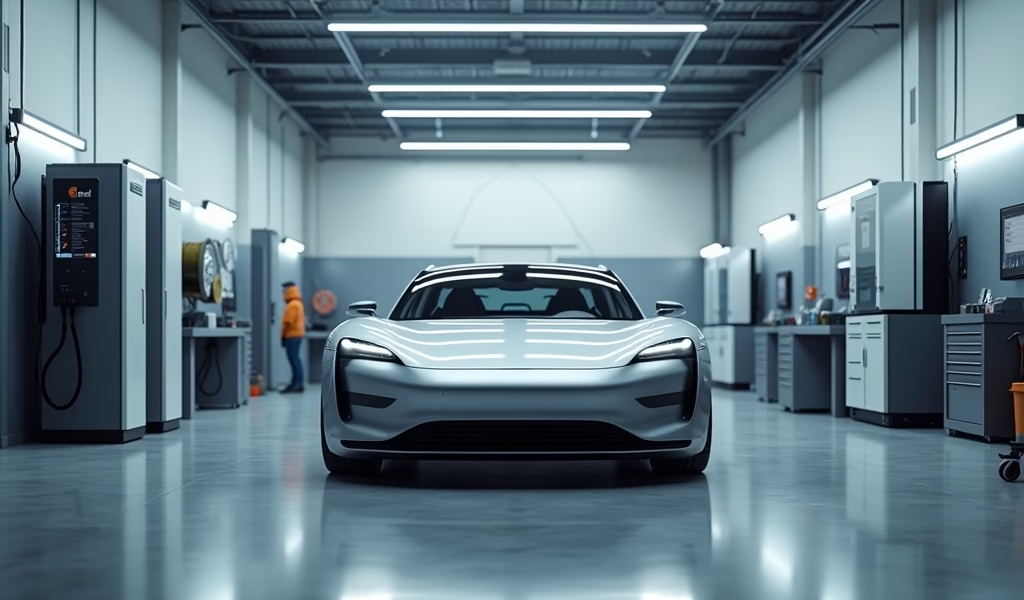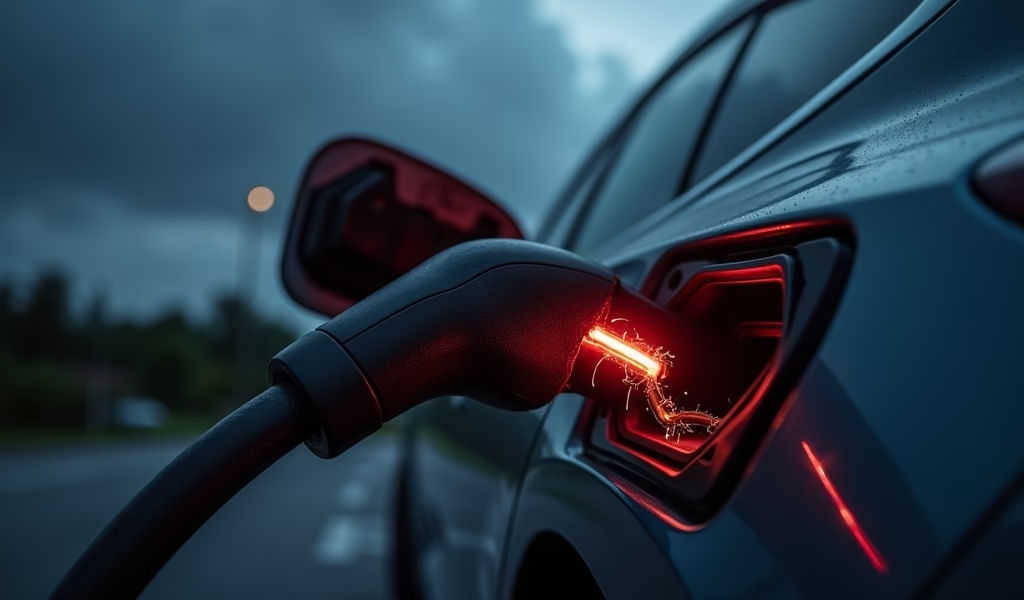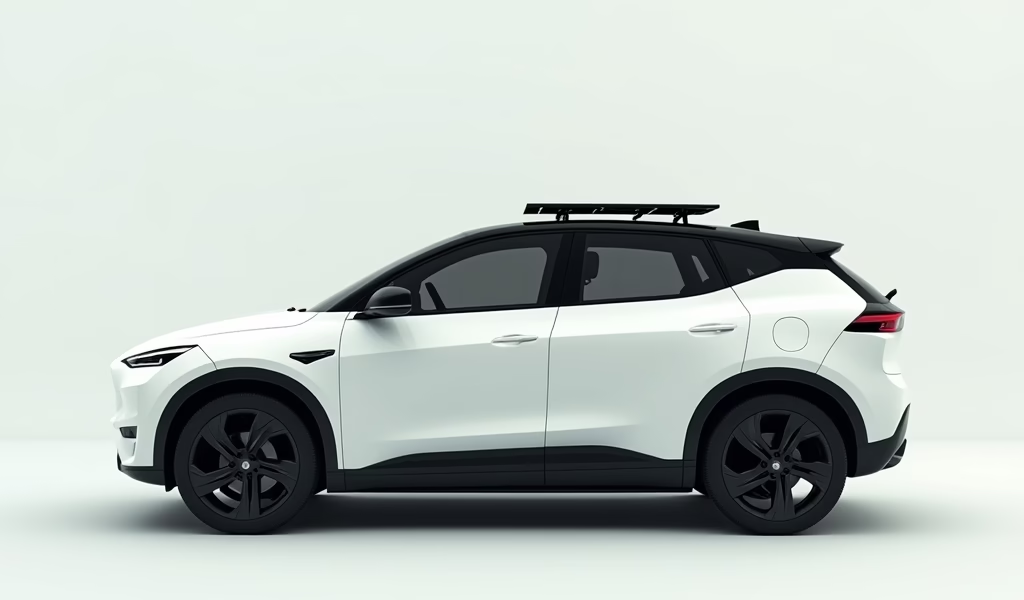Overview
This guide explains how to optimize electric vehicle ownership through proper charging habits, battery maintenance, efficient driving techniques, seasonal care, and utilization of tech features. It emphasizes that EVs require different care than gas vehicles but reward owners with lower operating costs and improved performance when properly maintained.
Table of Contents
- Understanding Electric Cars: Not Just Golf Carts on Steroids
- Charging Optimization: Juicing Up Your Electric Ride
- Battery Maintenance: Keeping Your Car’s Heart Healthy
- Efficient Driving Techniques: Squeeze Every Mile from Your Battery
- Seasonal Care: Babying Your EV Through Weather Extremes
- Tech Features: Getting Cozy with Your Car’s Brain
- Conclusion: Embracing the Electric Future
- Frequently Asked Questions
Understanding Electric Cars: Not Just Golf Carts on Steroids
Let me tell you some facts about electric cars – they’re like smartphones on wheels, except they won’t keep you up at night with notification pings (thank heavens for small mercies). As someone who’s had their hands dirty in more engines than I care to count, I can assure you that EVs aren’t just a passing fad like those fidget spinners your kids obsessed over.
Think of traditional cars as those old-school rotary phones – reliable, sure, but also clunky and outdated. Electric vehicles? They’re the sleek smartphones of the automotive world. They’ve evolved faster than my excuses for not going to the gym, and that’s saying something!
The heart of any electric car is its battery pack – typically a lithium-ion setup that would make your laptop battery look like a AA from your TV remote. These powerhouses store enough juice to propel a 4,000-pound vehicle for hundreds of miles. Not too shabby for something that doesn’t belch smoke like your uncle after a holiday meal.
Electric motors deliver instant torque, which is mechanic-speak for “holy moly, that thing can move!” Forget what you’ve heard about EVs being sluggish – modern electric cars can smoke many gasoline-powered vehicles at a stoplight. It’s like comparing a cheetah to a three-legged sloth carrying groceries.
The beauty of electric cars lies in their simplicity. With fewer moving parts than conventional vehicles on the market, there’s less that can go wrong. No oil changes, no transmission issues, no timing belts to snap at the most inconvenient moment possible. As a mechanic, it’s almost enough to make me sad… almost.
Charging Optimization: Juicing Up Your Electric Ride
Charging an electric car isn’t rocket science, but there are definitely ways to do it smarter. Think of your EV battery like that one friend who’s super high-maintenance – treat it right, and you’ll have a beautiful relationship. Neglect it, and well… let’s just say you’ll be calling for roadside assistance more often than you’d like.
First off, avoid regularly charging to 100% unless you’re planning a long trip. I know, I know – it seems counterintuitive, like leaving the house without finishing your coffee. But lithium-ion batteries prefer living in the 20-80% range, much like how I prefer living in my comfort zone of dad jokes and loose-fitting jeans.
Fast charging is convenient – it’s the drive-thru of the EV world – but it’s not ideal for regular use. It generates heat, and batteries hate heat more than I hate missing a tool from my set. According to research from the Department of Energy, frequent fast charging can accelerate battery degradation by up to 20% over the life of the vehicle.
Here’s a nifty tip: schedule your charging for off-peak hours. Most utilities offer lower rates during these times – usually overnight – which means you can save more money than that one time you “fixed” your leaky faucet yourself (before eventually calling a plumber).
If you’re charging at home (and about 80% of EV charging happens at home, not unlike my relationship with my refrigerator), invest in a Level 2 charger. It’s like upgrading from dial-up internet to broadband – you’ll wonder how you ever lived without it.

Battery Maintenance: Keeping Your Car’s Heart Healthy
The battery in your electric car is basically its beating heart, soul, and probably its entire personality. It’s like that one overachieving colleague who does everything while making it look easy. Taking care of this powerhouse isn’t just smart—it’s essential if you want your relationship with your EV to be longer than most Hollywood marriages.
Temperature management is crucial for battery health. EVs have their own thermal management systems, but you can help by parking in the shade during summer and, if possible, in a garage during winter. Think of your battery as Goldilocks – it doesn’t want too hot or too cold, just right.
Avoid letting your battery sit at extremely low charges for extended periods. It’s like leaving your phone dead for weeks – when you finally plug it in, it gives you that judgmental slow boot-up. If you’re going away for an extended period, leave your EV with about 50% charge – it’s the battery equivalent of a comfy couch.
Many newer electric models come with battery warranties that last 8-10 years or 100,000+ miles. That’s longer than many people keep their vehicles – or maintain their New Year’s resolutions, for that matter. But with proper care, your battery can remain healthy well beyond this period.
One of my clients drove an early model Nissan Leaf for over 150,000 miles with only 15% battery degradation. How? By following these guidelines with the religious fervor of someone avoiding carbs on a diet. The battery is a significant portion of your EV’s value, so treating it right is like protecting your investment – except this investment doesn’t fluctuate like your retirement account after a questionable political tweet.
Battery Protection Tips:
- Keep software updated – manufacturers frequently release improvements to battery management
- Use scheduled departure settings to precondition the battery while still plugged in
- Avoid storing the vehicle with either a very high or very low state of charge
- Drive gently when the battery is very cold (below freezing) until it warms up
- If possible, use slower Level 2 charging most of the time rather than DC fast charging
Efficient Driving Techniques: Squeeze Every Mile from Your Battery
Driving an EV efficiently is an art form – like making the perfect grilled cheese sandwich or convincing your kids that going to bed early is cool. Master these techniques, and you’ll be the envy of the EV community, squeezing miles out of your battery like I squeeze the last bit of toothpaste from the tube.
Embrace regenerative braking – it’s basically free energy, the automotive equivalent of finding cash in your old coat pocket. When you lift your foot off the accelerator, many EVs will slow down while converting that kinetic energy back into electricity. One-pedal driving, as it’s called, can recapture up to 20% of the energy used, according to research from the National Renewable Energy Laboratory.
Smooth acceleration is key – jackrabbit starts are fun (and let’s be honest, showing up those muscle cars is half the reason we bought EVs), but they’re also battery vampires. Imagine throwing dollar bills out the window with every hard acceleration. That’s essentially what you’re doing, except the bills are battery miles.
Watch your speed on highways. EVs are most efficient at moderate speeds, typically between 40-60 mph. Above that, wind resistance increases exponentially – it’s like trying to run through a swimming pool. At 75 mph, you might be using up to 25% more energy than at 65 mph. That’s physics being annoying, not me.
Use climate control wisely. Heating and cooling can significantly impact range, sometimes by as much as 30% in extreme conditions. Instead of heating the entire cabin in winter, use seat heaters and the steering wheel heater if available – they’re more efficient than trying to warm all that air. It’s like using a small space heater instead of heating your entire house just to keep your toes warm.
Plan your routes with elevation in mind. Going uphill takes more energy (shocking, I know), but coming down gives you a chance to regenerate. It’s like planning a diet where you know exactly when the cheat days are coming – work with the system, not against it.
Seasonal Care: Babying Your EV Through Weather Extremes
Electric cars and extreme weather go together like oil and water – or like me and early morning appointments. They’ll manage, but not without some complaint. Knowing how to care for your EV through seasonal changes is the difference between a smooth relationship and one filled with range anxiety and roadside assistance calls.
In winter, cold temperatures can reduce range by 20-30%. It’s not personal – lithium-ion batteries just perform chemical reactions more slowly when cold, like how I function before my morning coffee. Precondition your car while it’s still plugged in to warm the battery and cabin without depleting range. Your car’s app or infotainment system usually has this feature – use it religiously, like checking your social media first thing in the morning.
Speaking of winter, maintaining proper tire pressure becomes even more crucial for EVs. Under-inflated tires increase rolling resistance, which is fancy talk for “your car has to work harder to move.” In an EV, that means less range – and in winter, when you’re already dealing with reduced range, it’s like adding insult to injury.
Summer brings its own challenges. High temperatures can actually damage your battery over time. Park in shade whenever possible, use sunshades, and consider tinted windows if they’re legal in your area. Think of your EV as a chocolate bar – leave it in the sun too long, and things get messy.
If you live in areas with seasonal road salt, rinse your EV’s undercarriage regularly during winter. While EVs have fewer corrosion-vulnerable components than gas cars, they’re not immune. Salt corrodes everything it touches with the determination of a toddler trying to avoid bedtime.
Lastly, check your vehicle’s owner manual for specific seasonal maintenance recommendations. Manufacturers have spent millions developing these vehicles – they know a thing or two about keeping them happy in all conditions. It’s like following a recipe the first time instead of winging it and ending up with something that resembles food but tastes like disappointment.

Tech Features: Getting Cozy with Your Car’s Brain
Electric cars aren’t just about the battery and motor – they’re rolling computers with enough processing power to make early NASA engineers weep with jealousy. Getting friendly with your EV’s tech features is like learning to use all the buttons on your microwave instead of just “add 30 seconds” – it opens up a whole new world of possibilities.
First and foremost, download your car’s app. I cannot stress this enough. These apps let you check charge status, precondition the cabin, set charging schedules, and sometimes even summon your vehicle like an obedient metal pet. It’s the closest thing to automotive telekinesis we’ve achieved yet.
Learn to use your car’s energy consumption display. This little dashboard gem shows you how efficiently you’re driving in real-time. It’s like having a backseat driver, but one that’s actually helpful and doesn’t criticize your life choices.
Most EVs offer different driving modes that balance performance and efficiency. Sport mode is fun – like eating dessert before dinner – but Eco mode extends your range by limiting power and adjusting climate control. It’s the vehicular equivalent of eating your vegetables first. Not as exciting, but better for you in the long run.
Take advantage of over-the-air updates. Unlike traditional cars that remain largely the same throughout their lives, EVs can actually improve over time through software updates. Tesla famously added features like Sentry Mode and improved performance through nothing more than wireless updates. It’s like your car goes to sleep one night and wakes up smarter – if only that worked for humans.
Explore your vehicle’s route planning features. Many EV navigation systems can plan routes with charging stops, taking into account elevation, weather, and real-time charger availability. It’s like having a personal assistant who’s really, really into efficient travel planning. According to Forbes Wheels research, using integrated route planners can reduce charging stops by up to 15% compared to standard navigation.
Conclusion: Embracing the Electric Future
So there you have it – the essential facts about electric cars wrapped up with a bow of sarcasm and sprinkled with the wisdom that comes from years of getting grease under my fingernails. These vehicles aren’t just a flash in the pan; they’re the next chapter in our automotive story.
From understanding the basics of how these electron-guzzling chariots operate to mastering the fine art of battery babysitting, you’re now equipped with knowledge that puts you ahead of about 90% of drivers on the road today. Not bad for a few minutes of reading, eh?
Remember that your electric car, for all its high-tech wizardry, still needs care and attention. It’s like any relationship – neglect it, and you’ll pay for it later. But treat it right, and it’ll reward you with years of trouble-free driving, lower operating costs, and the smug satisfaction of sailing past gas stations while everyone else is watching prices climb higher than my blood pressure during tax season.
As EVs continue evolving faster than fashion trends, staying informed is half the battle. The other half is applying what you’ve learned – which is exactly what you’re now prepared to do. Whether you’re a seasoned electric veteran or still on the fence about making the switch, these care hacks will serve you well in the electrified future that’s already humming down the road toward us.
Now go forth and electrify – your commute, that is. Your planet (and your wallet) will thank you. Just don’t forget to wave sympathetically at the gas-pumpers as you silently cruise by.
Frequently Asked Questions
How long do electric car batteries really last?
Most EV batteries are designed to last 10-20 years or 100,000-200,000 miles before significant degradation occurs. With proper care, many will outlast the other components of the vehicle.
Does frequent fast charging damage my EV battery?
Yes, excessive DC fast charging can accelerate battery degradation over time. For everyday use, Level 2 charging is gentler on your battery and sufficient for overnight charging.
Are electric cars actually better for the environment?
Yes, even when accounting for battery production and electricity generation, EVs produce fewer lifetime emissions than comparable gas vehicles. The gap widens further as electrical grids become cleaner.
How much does it cost to replace an EV battery?
Replacement costs vary widely from $5,000 to $20,000 depending on the vehicle model and battery capacity. However, battery prices are falling by roughly 8-10% annually, making replacements increasingly affordable.
Can I tow with an electric car?
Many electric vehicles can tow, with capabilities ranging from 1,500 to 10,000+ pounds depending on the model. Keep in mind that towing significantly reduces driving range, often by 30-50%.

